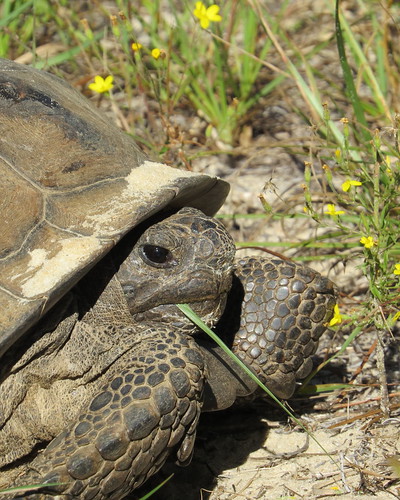
Gopher Tortoise. Photo by Dirk Stevenson of the Orianne Society.
Did you know the Forest Legacy Program is the only federal grant program focused on the permanent protection of important private forestland, conserving over 2.5 million acres to date?
This incentive-based and voluntary program managed by the U.S. Forest Service conserves working forests and environmental benefits for communities. It does this through land acquisition and conveyance to state management as well as through the establishment of conservation easements that allow families to maintain ownership of their land.
Forest Service researchers estimate that nearly 600,000 acres of forest are lost to development every year, with similar trends projected into the future. As demographic, commercial and climate change pressures intensify and threaten the integrity of some of the nation’s most treasured landscapes, the U.S. Forest Service has consistently supported efforts to assist and empower private landowners to conserve private lands.
One of these efforts is the Land and Water Conservation Fund (LWCF), which is funded through earnings from offshore oil and gas leasing royalties.
The LWCF expired last fall, but this Spring Congress reauthorized the fund with $450 million to continue this important work in coming years. With these and other funds, the Forest Service has been able to provide $100 million for 20 proposed projects across the country in 2017. These projects help families and communities preserve private forests while protecting and knitting together intact landscapes.
Selected projects are frequently championed by local communities that recognize the potential of this program to conserve not only the land and its resources, but the cultural identity that defines their landscapes.
One great example of what can happen when people utilize this program is the Lentile Longleaf Pine Tract in Georgia. This locally-driven work to protect a significant contiguous longleaf pine tract will secure the largest gopher tortoise tract in the state that includes over 1,800 acres of forested wetlands and cypress ponds, and provides the region with the many other benefits forests provide. Protected by land acquisition of over 7,000 acres of working forestland, the tract will buffer against imminent agricultural development that has fragmented wildlife habitat through much of the state.
No comments:
Post a Comment
Note: Only a member of this blog may post a comment.